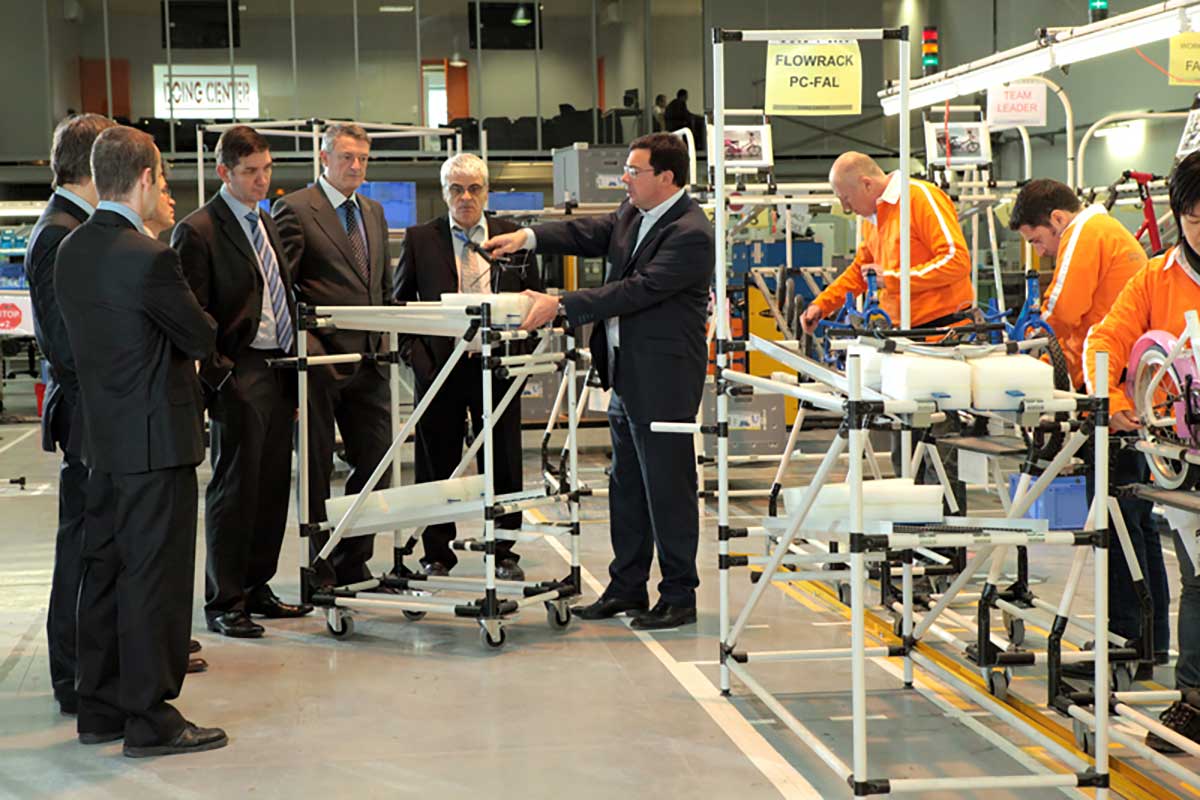There are three choices to plan your material flow system:
- 1. Fixed time, variable quantity
- 2. Variable time, fixed quantity:
- 3. Chaos
Any of the choices are valid depending on the context they are used in, and you’ll always have some element of each. The important thing is that you are choosing the primary system on purpose and planning for the system you have.
The first two options represent consistency, whereas chaos is what happens when you don’t know what system you’ve got.
The fixed time, variable quantity system is often referred to as the “bus route” – the loop follows a standard route, it passes every stop every loop at a standard time interval (every x minutes), and at each stop a number of items will be exchanged. This is how you execute and plan standard tugger routes using small trains, mother / daughter carts, and tug cart trains. The driver is not on the walkie or screen receiving dispatches about their next action, they are exchanging items in a planned sequence. In order to execute this approach well, there are a number of system elements that need to be in place – full / empty exchange, pull information, dedicated locations, and predictable consumption. It is the most effective, lowest cost system to operate but also requires a higher degree of organization and discipline to execute continually. If you’re working in this way for most of your items, you have a very repeatable and consistent material flow and score highly on a material flow assessment. Many improvements are still possible, and you have all the basic elements in place to capture them.
The variable time, fixed quantity system is often refereed to as the “taxi” – the path between any two points is random, the delivery vehicle will pass stops to get to their target destination, often travel empty, but will always deliver a standard quantity with each delivery. This is the typical system where fork lifts are the primary material delivery vehicle, and efforts to make it more efficient through vehicle tracking, time logs, and remote dispatch only go so far. Advantages of this system are the flexibility, ease of use (no changes to equipment or packaging), and low level system needs (minimal pull signals, variable locations). In small facilities and single product plants, this system may work fine. Once you start to add complexity and additional products, this system will start to break down – multiplying personnel cost, vehicle count, and floor space consumed by inventory. However, if you are able to apply this system with consistency you’re in a good position to move to a fixed time, variable quantity system and manage the complexity.
Nobody brags about their plan called “Chaos”, but that’s often exactly what they have. It’s the result of not having a plan and not knowing what system you want to operate. If you operate in chaos unintentionally, you’re constantly expediting, over handling, running out of critical items, and pouring money down the drain.
This applied to all kinds of systems, not just material flow in 3PL’s, plants, or distribution centers. Any time you are moving material and information together, you can think about your systems using this framework.
Taking another example from a fictional office environment:
– Office mail (fixed time, variable quantity) – every day at 1 pm, physical mail is dropped off at your desk. It’s all junk, the surprise is how many pieces you’ll receive!
– Meetings (variable time, fixed quantity) – every Friday you have a project meeting at 1 pm, whether it will last 30 minutes or an hour is anyone’s guess.
– Email (chaos) – emails show up in your inbox, content ranges from action needed to obscure to useless, and you can’t plan in advance.
Acknowledge that some part of your system will be chaos, but don’t choose chaos as your primary mode of operation. Take steps to manage the chaos to create breathing room, then pick a system and start implementing!



